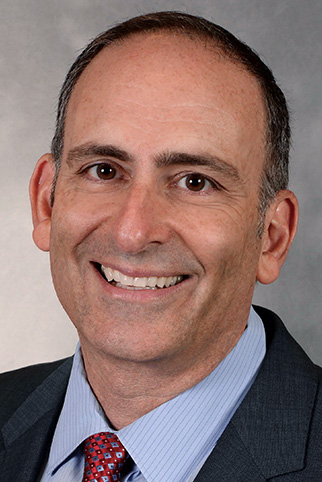/ Featured Blogs
Net Neutrality: What Is Old Is New Again
 On July 22, the FCC's open Internet order - which transforms Internet access service from a lightly regulated information service into a heavily regulated telecommunications service - will take effect. This article describes the policies and legal theories underlying the Order and the Order's effect on consumers of Internet services and providers of the service, including a number of entities that had previously escaped FCC regulation.
On July 22, the FCC's open Internet order - which transforms Internet access service from a lightly regulated information service into a heavily regulated telecommunications service - will take effect. This article describes the policies and legal theories underlying the Order and the Order's effect on consumers of Internet services and providers of the service, including a number of entities that had previously escaped FCC regulation.
- By Steve Rosen
- Comments: 0
- Views: 8,732
Global Domain Market: 368 Million Names and Growth in 2023 (Afnic Observatory)
 Afnic, the association in charge of the .fr domain and several other French overseas and generic Top Level Domains, has published the 2023 edition of its annual observatory report "The global domain name market" containing all of the latest key figures and trends in the TLD market... At year-end 2023, the global domain name market represented some 368 million domain names.
Afnic, the association in charge of the .fr domain and several other French overseas and generic Top Level Domains, has published the 2023 edition of its annual observatory report "The global domain name market" containing all of the latest key figures and trends in the TLD market... At year-end 2023, the global domain name market represented some 368 million domain names.
- By Loic Damilaville
- Comments: 0
- Views: 6,442
Will We Ever End Legacy Telephone Networks?
 Anybody not involved in the telephone business will probably be surprised to find that the old TDM telephone networks are still very much alive and in place. The old technologies were supposed to be phased out and replaced by digital technologies. The FCC started talking about this before 2010. In 2013, Tom Wheeler, the FCC Chairman at the time, announced an effort to force the needed changes, which was dubbed the IP Transition.
Anybody not involved in the telephone business will probably be surprised to find that the old TDM telephone networks are still very much alive and in place. The old technologies were supposed to be phased out and replaced by digital technologies. The FCC started talking about this before 2010. In 2013, Tom Wheeler, the FCC Chairman at the time, announced an effort to force the needed changes, which was dubbed the IP Transition.
- By Doug Dawson
- Comments: 1
- Views: 8,469
The Evolution of DNS: Adapting to the Changing Internet Landscape
 The DNS is a crucial part of today's Internet. With the fracturing of the network's address space as a byproduct of IPv4 address run down and the protracted IPv6 transition the Internet's name space is now the defining attribute of the Internet that makes it one network. However, the DNS is not a rigid and unchanging technology. It has changed considerably over the lifetime of the Internet and here I'd like to look at what's changed and what's remained the same.
The DNS is a crucial part of today's Internet. With the fracturing of the network's address space as a byproduct of IPv4 address run down and the protracted IPv6 transition the Internet's name space is now the defining attribute of the Internet that makes it one network. However, the DNS is not a rigid and unchanging technology. It has changed considerably over the lifetime of the Internet and here I'd like to look at what's changed and what's remained the same.
- By Geoff Huston
- Comments: 0
- Views: 11,906
‘Internet Fragmentation’: A Defining Challenge for Digital Technology Governance?
 At the recent Internet Corporation for Assigned Names and Numbers (ICANN) 80 Policy Forum meeting, one notable takeaway was its close focus on questions around the stability and security of the technical layer of the Internet: the growing risks which assail it, and potential ways to address these through governance.
At the recent Internet Corporation for Assigned Names and Numbers (ICANN) 80 Policy Forum meeting, one notable takeaway was its close focus on questions around the stability and security of the technical layer of the Internet: the growing risks which assail it, and potential ways to address these through governance.
- By Michaela Nakayama Shapiro
- Comments: 1
- Views: 13,262
A Mature Broadband Market? (Implications and Industry Shifts)
 It is becoming clear that the broadband market is reaching maturity. This is already causing havoc in the industry for ISPs that relied on year-over-year customer growth to prop up stock prices. Earlier this year, the New Street Research, a company that specializes in research in the telecommunications and technology sectors, said that it estimated that new broadband customers would grow by about 1 million this year.
It is becoming clear that the broadband market is reaching maturity. This is already causing havoc in the industry for ISPs that relied on year-over-year customer growth to prop up stock prices. Earlier this year, the New Street Research, a company that specializes in research in the telecommunications and technology sectors, said that it estimated that new broadband customers would grow by about 1 million this year.
- By Doug Dawson
- Comments: 0
- Views: 6,396
When a UDRP Panel Infers Bad Faith from An Asking Price
 In the Converse.co dispute, a three-member UDRP panel unanimously ordered the transfer of the disputed domain name to the Complainants, All Star C.V. and Converse, Inc., owners of the well-known brand CONVERSE for shoes and apparel. The panel drew the inference that the Respondent, by setting of an asking price of around $300,000 after having acquired the domain name for $306, was primarily motivated by a bad faith intent to target the Complaint.
In the Converse.co dispute, a three-member UDRP panel unanimously ordered the transfer of the disputed domain name to the Complainants, All Star C.V. and Converse, Inc., owners of the well-known brand CONVERSE for shoes and apparel. The panel drew the inference that the Respondent, by setting of an asking price of around $300,000 after having acquired the domain name for $306, was primarily motivated by a bad faith intent to target the Complaint.
- By Nat Cohen
- Comments: 0
- Views: 8,469
Alternative Insights on Article 28 of the NIS2 Directive
 On June 9 CircleID published an insightful article by Thomas Rickert entitled "Demystifying Art 28 NIS2." In that piece Thomas set forth two alternative interpretations of Article 28(6) of NIS2, and argued that TLD registries should not be required to maintain a separate database of the registrant data under NIS2. In my view, Thomas' approach is inconsistent with the remainder of Article 28, and would not achieve the goals of NIS2 to improve cybersecurity across the EU member states.
On June 9 CircleID published an insightful article by Thomas Rickert entitled "Demystifying Art 28 NIS2." In that piece Thomas set forth two alternative interpretations of Article 28(6) of NIS2, and argued that TLD registries should not be required to maintain a separate database of the registrant data under NIS2. In my view, Thomas' approach is inconsistent with the remainder of Article 28, and would not achieve the goals of NIS2 to improve cybersecurity across the EU member states.
- By Dean Marks
- Comments: 12
- Views: 14,978
DOTZON Study: Digital City Brands 2024
 We've just published the 2024 edition of the DOTZON study "Digital City Brands." After introducing the study in early 2017, DOTZON has mapped how successful cities are using their Digital City Brands for the seventh year in a row. The Digital City Brand is the digital dimension of the City Brand and mirrors the "Digitalness" of a city. The advent of the Internet was why Digital City Brands came into being in the first place.
We've just published the 2024 edition of the DOTZON study "Digital City Brands." After introducing the study in early 2017, DOTZON has mapped how successful cities are using their Digital City Brands for the seventh year in a row. The Digital City Brand is the digital dimension of the City Brand and mirrors the "Digitalness" of a city. The advent of the Internet was why Digital City Brands came into being in the first place.
- By Katrin Ohlmer
- Comments: 0
- Views: 8,018
Demystifying Art. 28 NIS2
 On December 14, 2022, the European Parliament adopted the Directive on measures for a high common level of cybersecurity across the Union (Directive (EU) 2022/2555) hereinafter referred to as "NIS2"), which was published in the official journal on December 27, 2022. Being a directive, NIS2 requires transposition into national law. According to Art. 41 of NIS2, the transposition into national law must take place by October 17, 2024 and the measures must be applied as of October 18, 2024.
On December 14, 2022, the European Parliament adopted the Directive on measures for a high common level of cybersecurity across the Union (Directive (EU) 2022/2555) hereinafter referred to as "NIS2"), which was published in the official journal on December 27, 2022. Being a directive, NIS2 requires transposition into national law. According to Art. 41 of NIS2, the transposition into national law must take place by October 17, 2024 and the measures must be applied as of October 18, 2024.
- By Thomas Rickert
- Comments: 1
- Views: 13,732